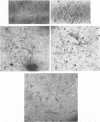Abstract
Forty isolates of herpes simplex virus were compared by means of cross-neutralization curves. The 11 oral isolates were serotype 1, and all 29 genital/anal isolates were serotype 2. The cytopathic effects of the two serotypes were consistently different. Passage of strains of type 1 and type 2 in mice and in rabbits yielded two variants, although the majority of the strains remained unchanged serologically and in their cytopathic effects. The two variants were derived from type 1 strains and differed from the parent strains in their cytopathic effects, each of them producing syncytia and enlarged plaques. They had, however, retained the serotypic properties and the deoxyribonucleic acid (DNA) densities of their parent strains. The Roizman syncytial/macroplaque strain of herpes simplex virus was also included in the study; the density of its DNA (1.727 g/ml) was typical of type 1 strains, and serologically it seemed to be basically a type 1 strain, although it was neutralized by type 2 antiserum slightly better than were other type 1 strains. Growth curves were performed of the two serotypes in rabbit kidney, human fibroblast, and mouse embryo tissue cultures. The type 2 strains attained lower titers of infectivity in these three cell systems; the levels of infectivity of type 2 virus in the culture fluid decreased much more rapidly after the maximum had been attained than did the levels of infectivity of the type 1 strains, due to the greater instability of the type 2 virus. Parallel titrations of different strains in tissue cultures and intracerebrally in mice indicated that the latter assay system was usually more sensitive for type 2 strains than it was for type 1 strains. The paralytic sequelae and inflammatory changes of lumbar ganglia and spinal cord in young rabbits inoculated extraneurally with strains of the two serotypes also indicate that the type 2 virus is more virulent in laboratory animals than is type 1 virus.
Full text
PDF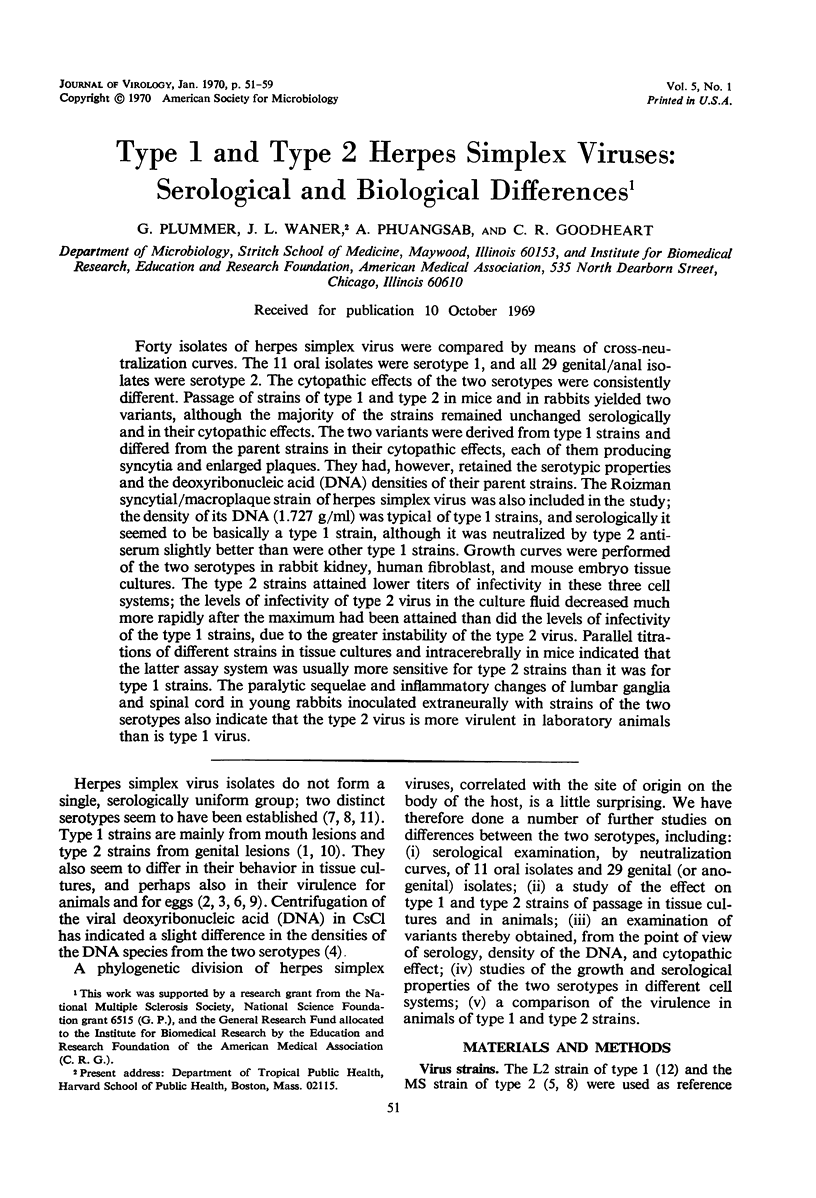
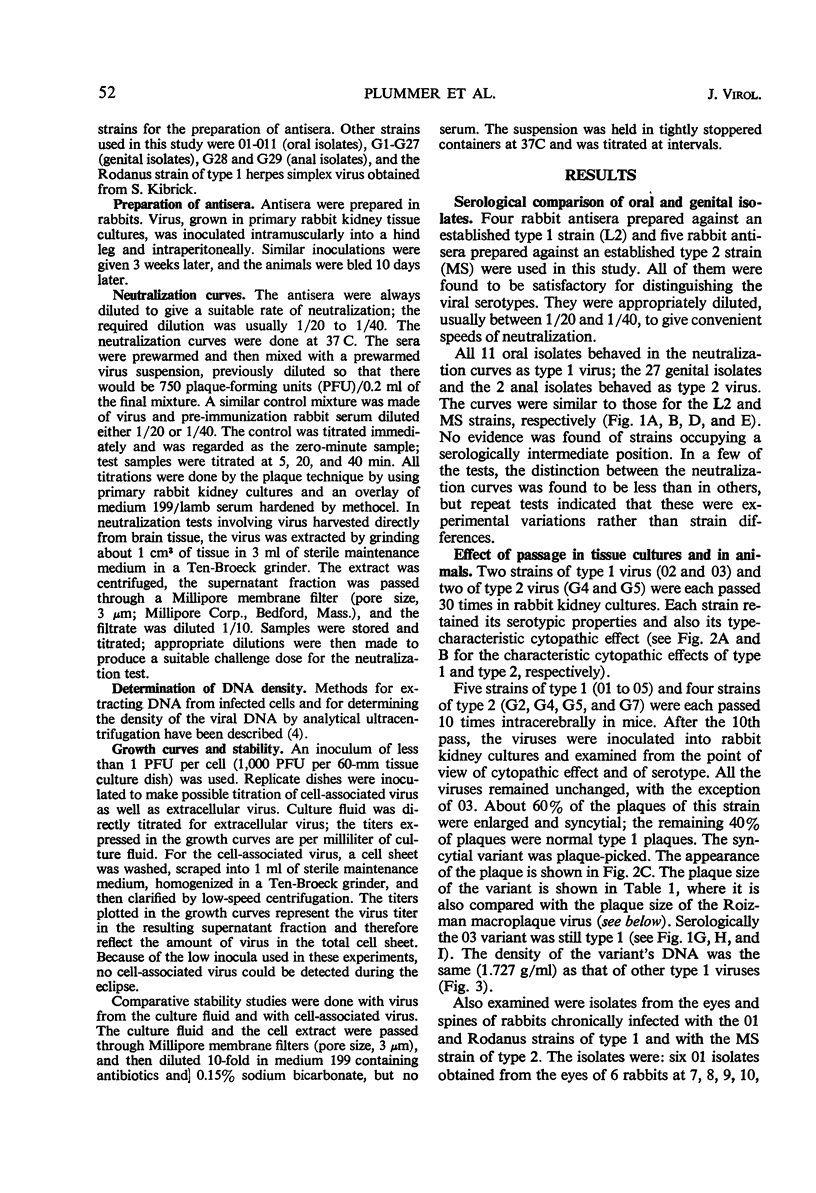
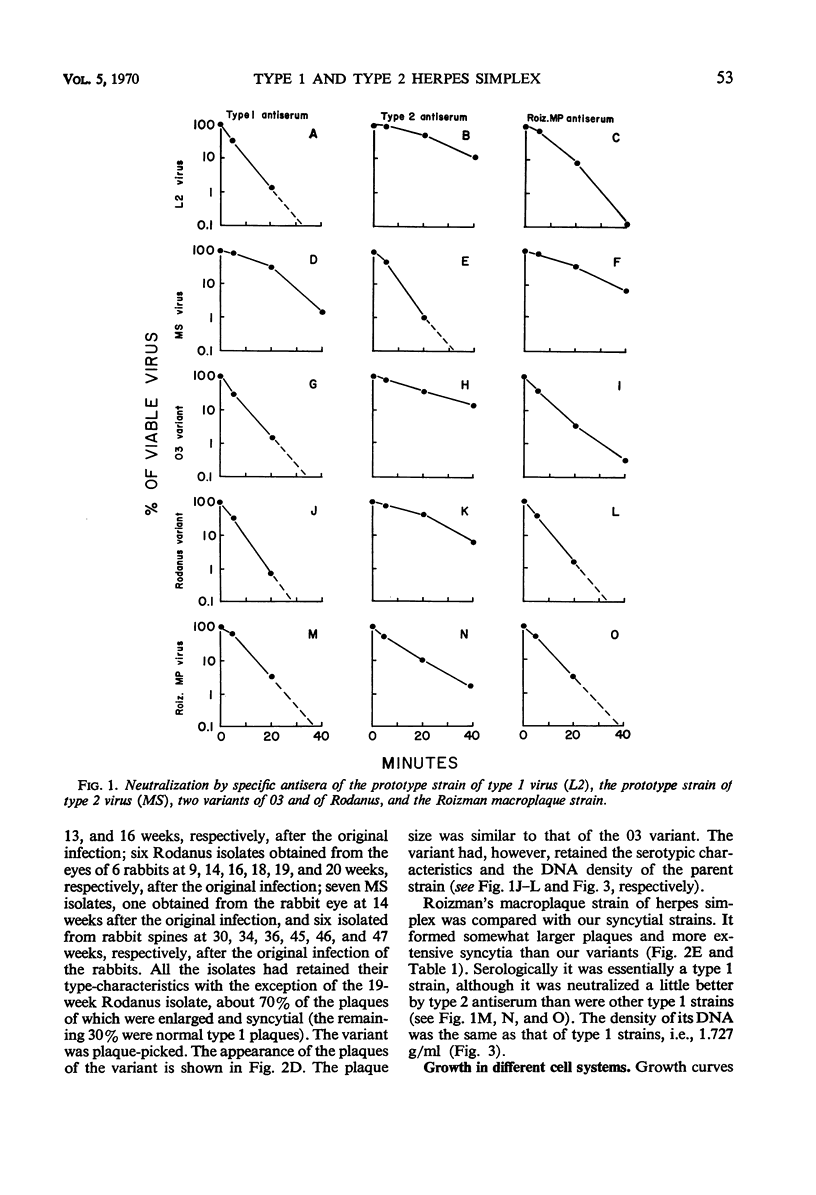
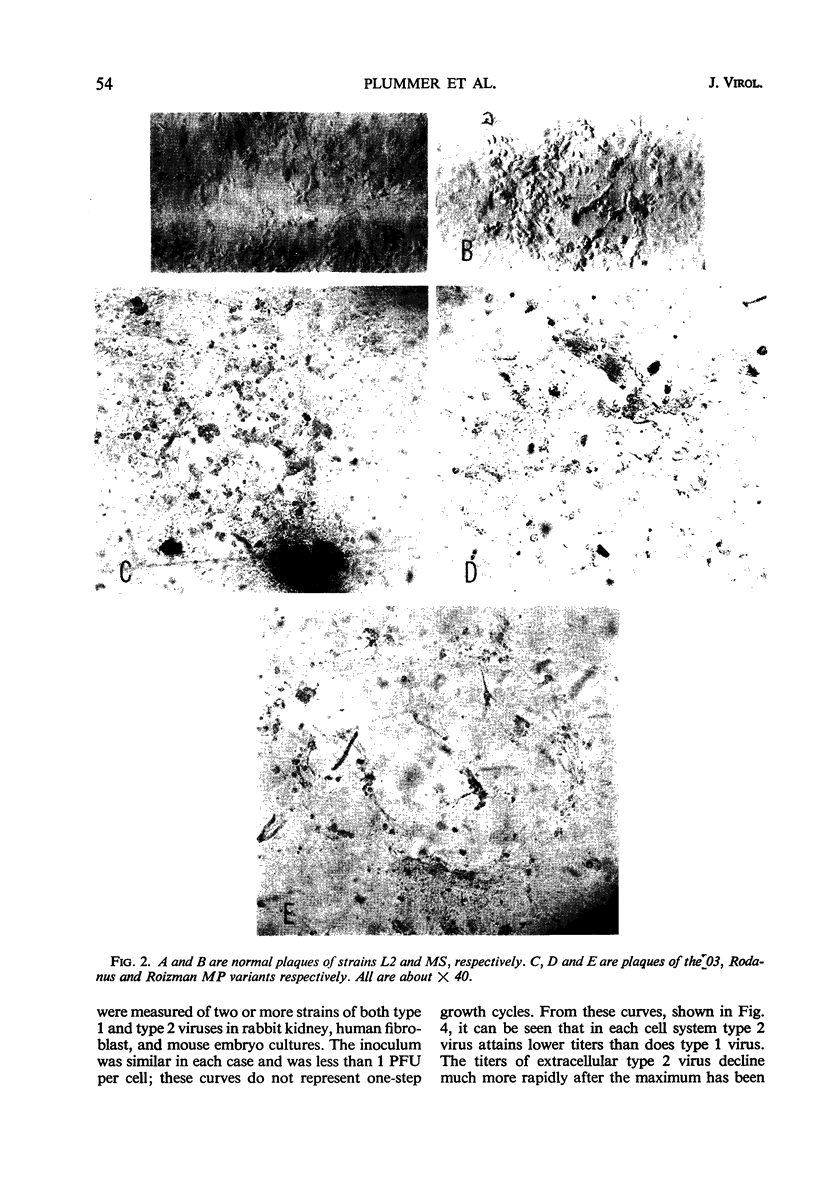
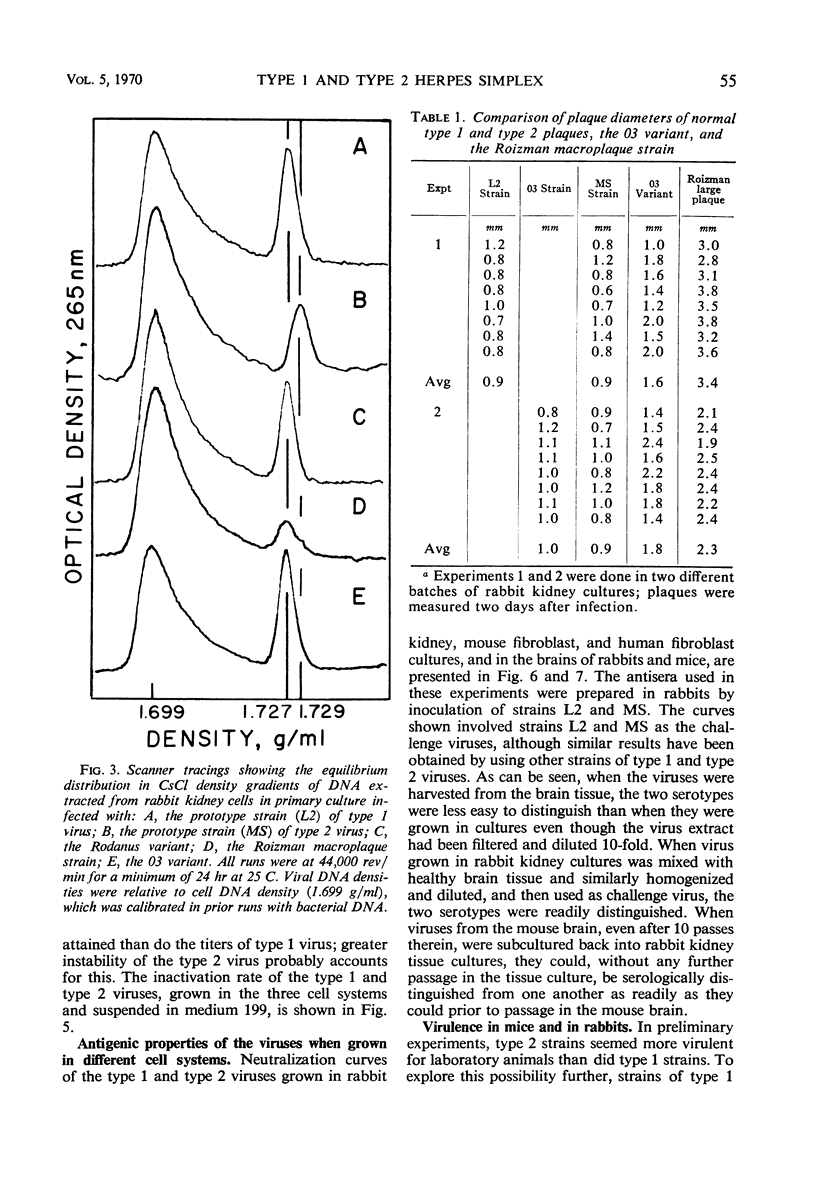
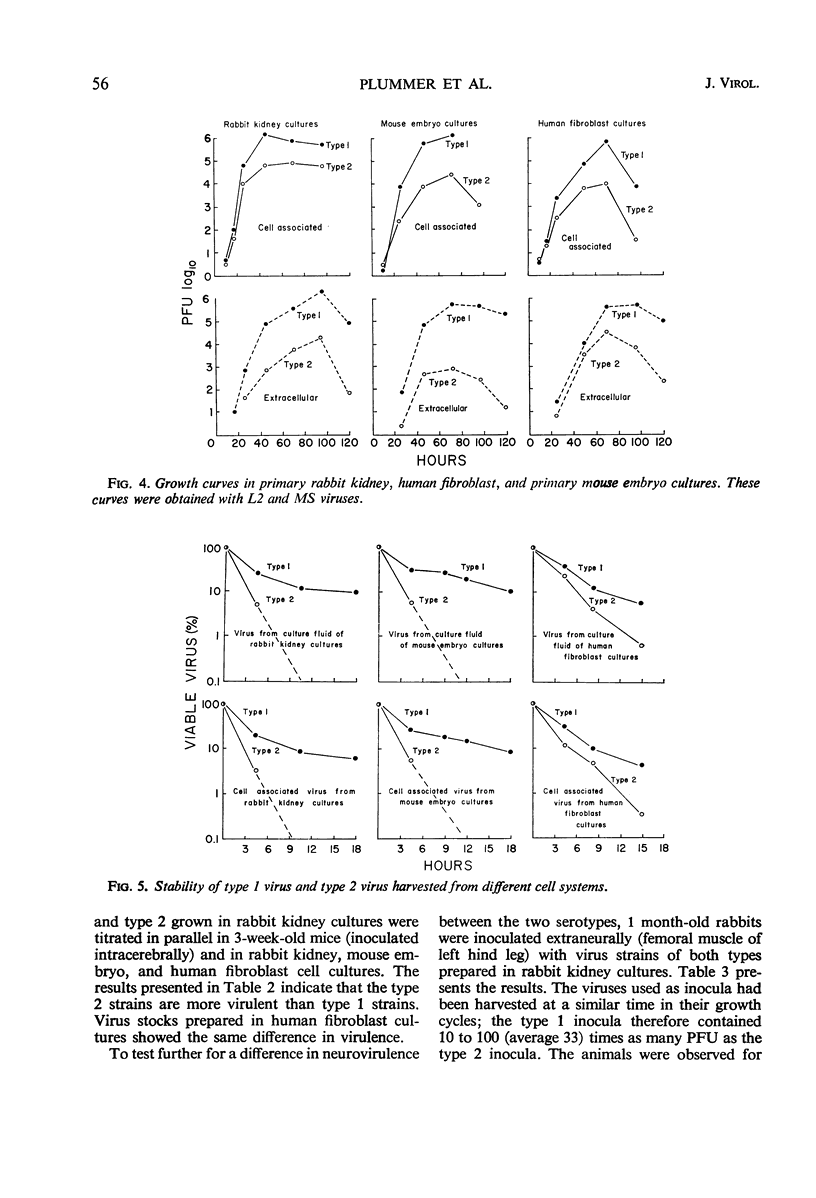
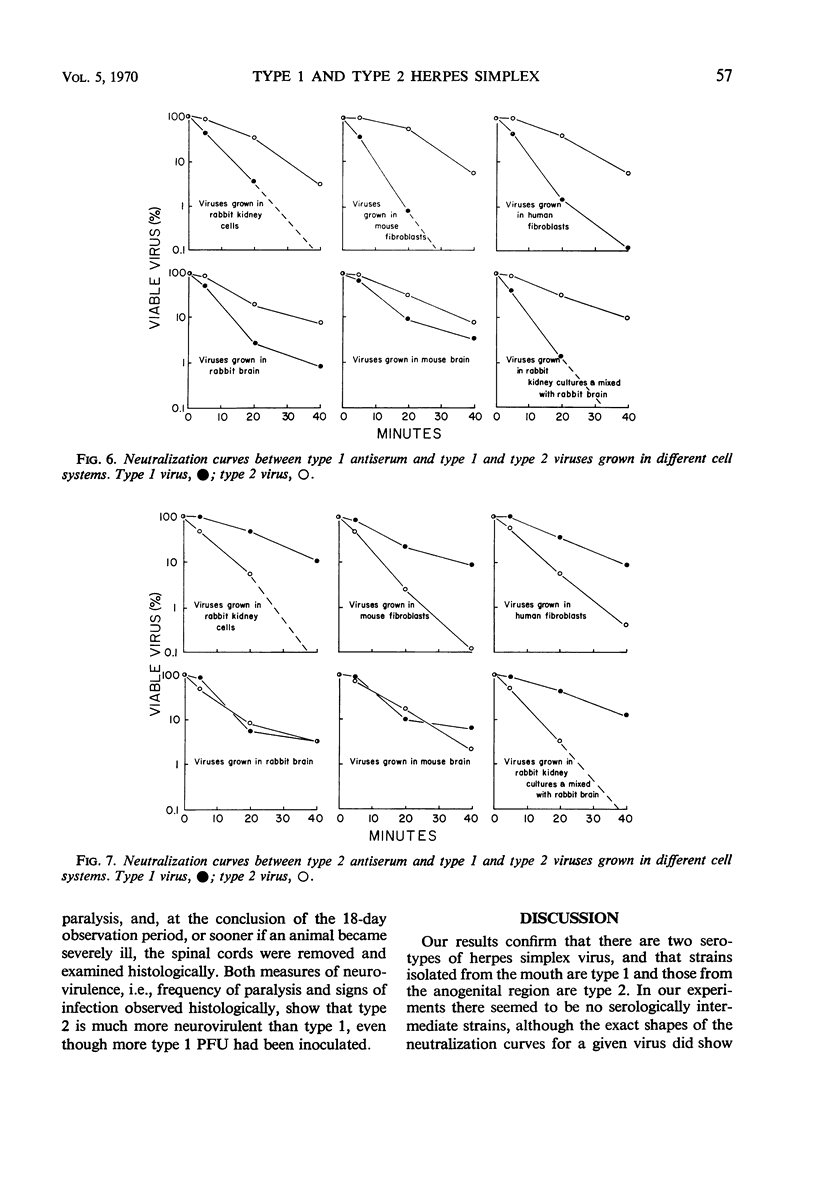
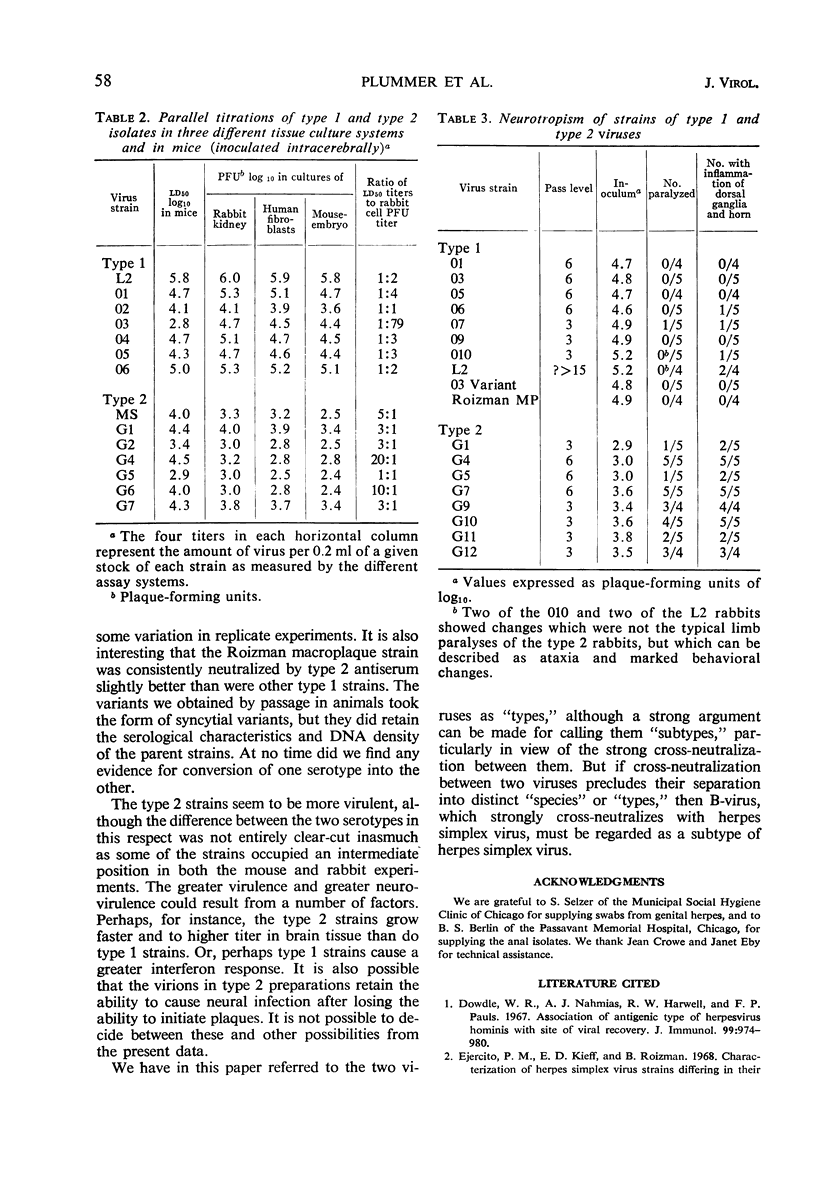
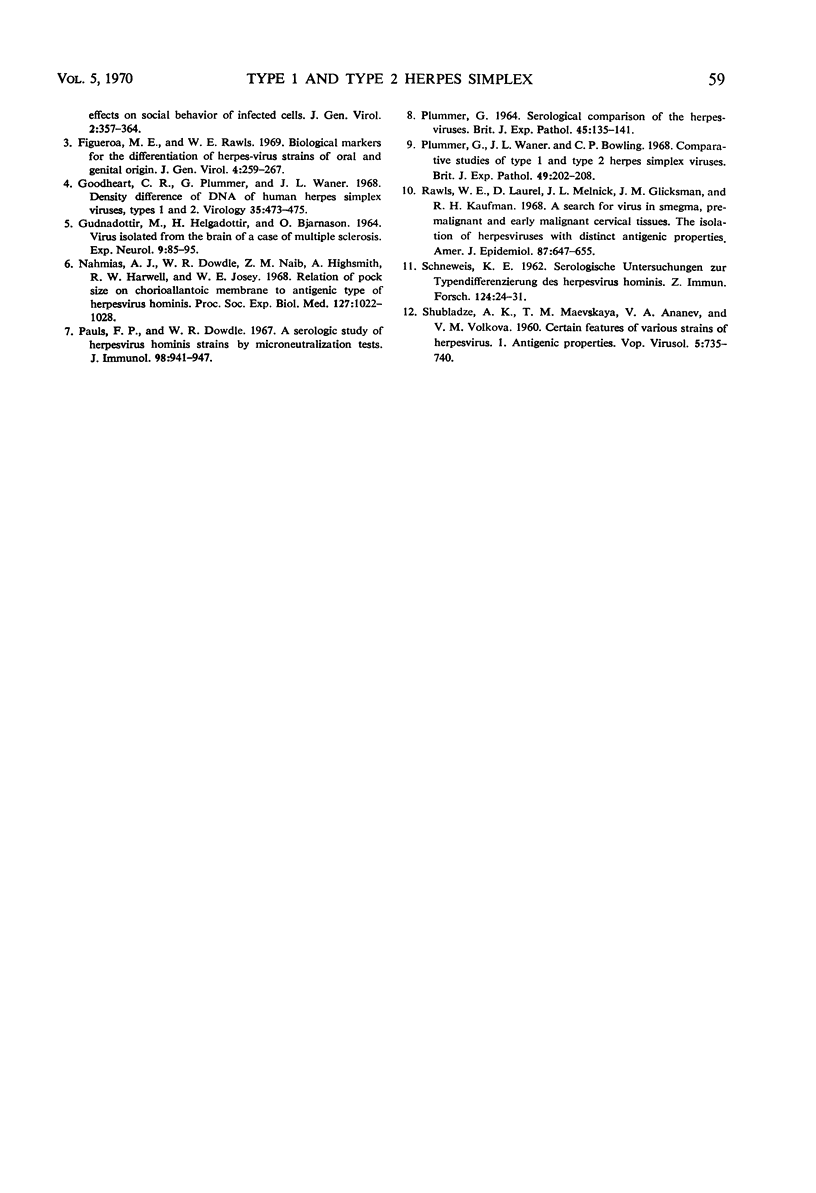
Images in this article
Selected References
These references are in PubMed. This may not be the complete list of references from this article.
- Dowdle W. R., Nahmias A. J., Harwell R. W., Pauls F. P. Association of antigenic type of Herpesvirus hominis with site of viral recovery. J Immunol. 1967 Nov;99(5):974–980. [PubMed] [Google Scholar]
- Ejercito P. M., Kieff E. D., Roizman B. Characterization of herpes simplex virus strains differing in their effects on social behaviour of infected cells. J Gen Virol. 1968 May;2(3):357–364. doi: 10.1099/0022-1317-2-3-357. [DOI] [PubMed] [Google Scholar]
- Figueroa M. E., Rawls W. E. Biological markers for differentiation of herpes-virus strains of oral and genital origin. J Gen Virol. 1969 Mar;4(2):259–267. doi: 10.1099/0022-1317-4-2-259. [DOI] [PubMed] [Google Scholar]
- GUDNADOTTIR M., HELGADOTTIR H., BJARNASON O., JONSDOTTIR K. VIRUS ISOLATED FROM THE BRAIN OF A PATIENT WITH MULTIPLE SCLEROSIS. Exp Neurol. 1964 Feb;9:85–95. doi: 10.1016/0014-4886(64)90008-1. [DOI] [PubMed] [Google Scholar]
- Goodheart C. R., Plummer G., Waner J. L. Density difference of DNA of human herpes simplex viruses, types I and II. Virology. 1968 Jul;35(3):473–475. doi: 10.1016/0042-6822(68)90225-0. [DOI] [PubMed] [Google Scholar]
- Nahmias A. J., Dowdle W. R., Naib Z. M., Highsmith A., Harwell R. W., Josey W. E. Relation of pock size on chorioallantoic membrane to antigenic type of herpesvirus hominis. Proc Soc Exp Biol Med. 1968 Apr;127(4):1022–1028. doi: 10.3181/00379727-127-32861. [DOI] [PubMed] [Google Scholar]
- PLUMMER G. SEROLOGICAL COMPARISON OF THE HERPES VIRUSES. Br J Exp Pathol. 1964 Apr;45:135–141. [PMC free article] [PubMed] [Google Scholar]
- Pauls F. P., Dowdle W. R. A serologic study of herpesvirus hominis strains by microneutralization tests. J Immunol. 1967 May;98(5):941–947. [PubMed] [Google Scholar]
- Plummer G., Waner J. L., Bowling C. P. Comparative studies of type 1 and type 2 & 'herpes simplex' viruses. Br J Exp Pathol. 1968 Apr;49(2):202–208. [PMC free article] [PubMed] [Google Scholar]
- Rawls W. E., Laurel D., Melnick J. L., Glicksman J. M., Kaufman R. H. A search for viruses in smegma, premalignant and early malignant cervical tissues. The isolation of Herpesviruses with distinct antigenic properties. Am J Epidemiol. 1968 May;87(3):647–655. doi: 10.1093/oxfordjournals.aje.a120855. [DOI] [PubMed] [Google Scholar]



